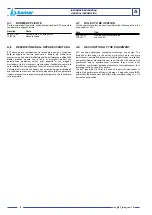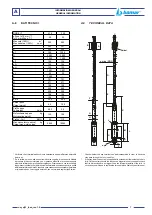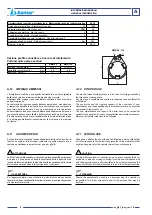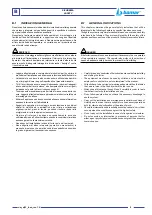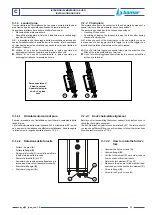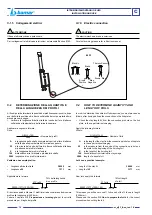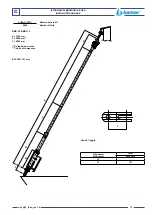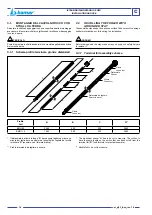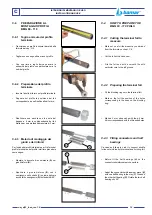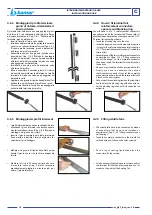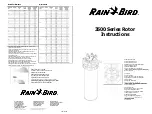
C-10 EMERGENZA MANUALE
In caso di inconvenienti elettrici è possibile azionare
manualmente l’avvolgifi occo:
• Inserire la manovella di azionamento.
• Ruotare la manovella in senso orario o antiorario
per avvolgere o svolgere la vela.
• Al termine dell’operazione smontare la
manovella.
Possibili soluzioni di azionamenti manuali:
• manovella winch
• inserto per trapano a batteria
C-10 MANUAL EMERGENCY
CLUTCH
In case of electric failure, the electric furler may be
manually operated:
• Insert the handle.
• Rotate the handle either clockwise or anti-
clockwise in order to furl or unfurl the sail.
•
Taking off the handle when fi nished.
Possible solutions for manual operations:
• winch handle
• drill adapter
C-11 CONSIGLI PER LA VELA
Se la barca è fornita di numerose vele, ognuna di queste dovrebbe avere
la stessa lunghezza in inferitura in modo che la testa girevole si trovi alla
stessa altezza quando la vela è completamente issata per formare tra
drizza e strallo un angolo di circa 10 gradi (vedi C-9).
PERICOLO
PERICOLO DI FOLGORAZIONE
ATTENZIONE
AVVERTENZA
RISPETTA L'AMBIENTE
Quando la vela è armata la testa girevole non deve mai essere battuta
sull’anello di fermo del terminale. Il carico di trazione che graverebbe sui
profi li porterebbe alla rottura dei giunti di collegamento dei profi li stessi.
Il migliore modo per avere la stessa lunghezza di inferitura è aggiungere
uno stroppo di qualità “
Y
” di lunghezza opportuna. Per stabilire questa
lunghezza issare la vela portando la testa girevole all’altezza corretta e
murare la vela con uno stroppo di lunghezza adeguata per poter dare
alla vela la normale tensione e rilevarne la misura
“
X
”
.
PERICOLO
PERICOLO DI FOLGORAZIONE
ATTENZIONE
AVVERTENZA
RISPETTA L'AMBIENTE
La lunghezza dello stroppo “
Y
” deve essere uguale alla lunghezza “
X
”.
PERICOLO
PERICOLO DI FOLGORAZIONE
ATTENZIONE
AVVERTENZA
RISPETTA L'AMBIENTE
Posizionare direttamente lo stroppo “
Y
” sulla penna della vela; così non
sarà rimosso, perduto o scambiato.
C-11 SUGGESTIONS FOR THE SAIL
If the boat is supplied with various sails, they all should have all the same
hoisting length to allow the halyard swivel remain at the same height
when the sail is hoisted in order to keep the 10° angle between halyard
and stay (see C-9).
DANGER
DANGER OF ELECTROCUTION
CAUTION
WARNING
RESPECT THE ENVIRONMENT
When the sail is hoisted the halyard swivel must never touch the blocking
ring of the terminal foil. The load that would then weigh on the foils would
break the splice pieces/connectors.
The best way to have the same hoisting length is to add a good quality
collar “
Y
” of the right length, to the sail. You will fi nd out this length by
hoisting the sail and taking the halyard swivel to the correct height. If you
tack the sail with a collar of an adequate length in order to give the sail
the normal tension you will then fi nd out the measure “
X
”.
DANGER
DANGER OF ELECTROCUTION
CAUTION
WARNING
RESPECT THE ENVIRONMENT
The “
Y
” collar and the “
X
” collar have to be equal in length.
DANGER
DANGER OF ELECTROCUTION
CAUTION
WARNING
RESPECT THE ENVIRONMENT
Position the “
Y
” collar on the sail head, in order not to remove it or loose it.
C
ISTRUZIONI DI MONTAGGIO E USO
INSTALLATION AND USE
20
um_ejf 3_it-en_rev. 1.0
Содержание EJF
Страница 27: ......

